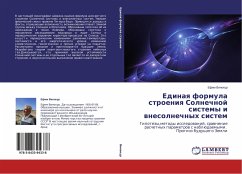The Rydberg formula is used in atomic physics to describe the wavelengths of spectral lines of many chemical elements. The formula was invented by the Swedish physicist Johannes Rydberg and presented on November 5, 1888. In the 1880s, Rydberg worked on a formula describing the relation between the wavelengths in spectral lines of alkali metals. He noticed that lines came in series and he found that he could simplify his calculations by using the wavenumber (the number of waves occupying a set unit of length, equal to 1/ , the inverse of the wavelength) as his unit of measurement. He plotted the wavenumbers (n) of successive lines in each series against consecutive integers which represented the order of the lines in that particular series. Finding that the resulting curves were similarly shaped, he sought a single function which could generate all of them, when appropriate constants were inserted.
Bitte wählen Sie Ihr Anliegen aus.
Rechnungen
Retourenschein anfordern
Bestellstatus
Storno






![The Discovery of Gravitational Master Formula [ GMF] The Discovery of Gravitational Master Formula [ GMF]](https://bilder.buecher.de/produkte/55/55271/55271210m.jpg)

